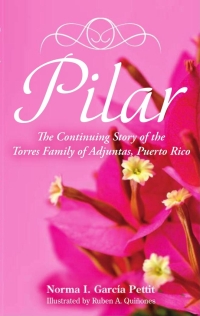So Much Flavor!
So much flavor! I am not just talking about food – empanadillas, pasteles, arroz con gandules, mofongo, lechón asado, pollo guisado, etc. – I am talking about cultural flavor in general…Puerto Rico has so much of it!
From the moment your plane lands and the people onboard break out in applause, you know that you are somewhere special. Why do we clap? I, for one, am always grateful for the end of a long journey from California on a virtually sleepless red-eye flight as well as for a safe landing. But there is also the thrill and excitement of arriving in Puerto Rico, la isla del encanto. For many people in the diaspora, the homecoming has been long overdue. Even for me, though we now go to Puerto Rico twice a year and stay for six or more weeks, it doesn’t get old.
When you walk out to the gate you are surrounded by voices all around you speaking in that distinctive Puerto Rican accent. It sounds so delightful to my ears. Interestingly enough, though Puerto Rico is a small island (111 miles by 39 miles, according to Britannica.com), there are differences in accents in the different towns and regions. The other day I received a phone call from someone who has a house in El Cocal, Yabucoa, the gated community in which Randy and I also own a home. I told Randy that the man’s accent sounded to me like he was from Ponce. He sounded exactly like my cousin Papo.
Vocabulary can also be different depending on what region of the island people are from. In the San Juan area, a nickel is called un vellón de cinco – a five cent coin, but in Ponce it is called una ficha. In some places un caldero is known as una olla, and what you call it could depend on the size of the pot or what it is used for. Ice cream can be called mantecado or helado, and we already talked about the controversy between empanadillas and pastelillos. For me, una funda is a pillowcase and una bolsa is a bag. But in some parts of the island, una funda is another word for a bag.
Honestly, I even think that people from Adjuntas have a certain look to them. Most of the people from Adjuntas that I have met or have seen in my mother’s old photographs are slender and have big eyes and a lovely bronzed tint to their skin color. Maybe it is due to a higher concentration of Taíno blood in them. Of course, people move around a lot these days, but back in the late nineteenth century they tended to be married, live their lives, and be buried in the same town in which they were born.
I started pondering on all of this recently because in working on writing the sequel to Luisa, which takes place in the town of Ponce, I noticed a distinctively different feel to the setting. Obviously, there are going to be differences when comparing town life to mountain dwelling, but it is more than that. There is just a different flavor to life in the different regions. Even in this day and age, with “the world becoming smaller,” I can be enveloped in a uniquely different atmosphere in our beach community of El Cocal, Yabucoa than I am in the busy, historical town of Ponce or when breathing in the freshness of nature in the mountains of Adjuntas. Each place has its own identifying flavor, and I appreciate them all. There is honestly so much left for me to taste and see in our little island of Puerto Rico that I don’t expect to tire of making our twice yearly trips there. My goal is to eventually experience the individuality of each town. If you are looking for a place to escape to from the cold next winter, I encourage you to plan a vacation to la Isla del Encanto – the Island of Enchantment – and experience the rich flavor of its cultural variety.
